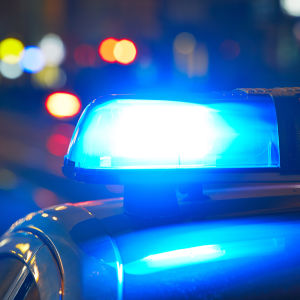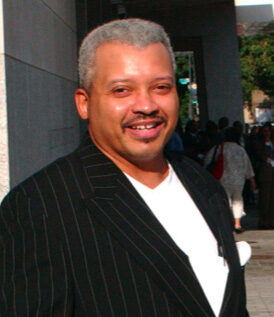He has the high-tech infrastructure in place; now all he needs is the complete data.
Dr. Rashawn Ray, a sociology professor at the University of Maryland, is leading a special project to study police officers and their daily work lives. Using Virtual Reality headsets, 3-D effects and computerized specialization, Ray and his students are measuring actions, reactions and interactions of police officers in Prince George’s County, Md.
Ray said police have the most dangerous job in America, which makes this project even more important. “It’s a highly stressful job, with long hours,” he said. “I don’t think most people realize what officers often have to deal with.”
It’s a sensitive project for sure, especially for the police officers themselves.
Ray and his team employ a litany of scenarios and simulations at Maryland’s sociology laboratory to measure officers’ heart rates, sleeping patterns, pulse elevations, eye movements and stress levels. The testing also examines implicit bias and police responses during various interactions.
For example, how do officers react when dealing with suspicious subjects as well as encounters along racial lines during car pull-over stops on the nation’s roads. And even situations involving those with autism and other mental conditions are analyzed versus confrontations with non-compliant or unresponsive subjects. For example, is a subject actually mentally ill or is he simply being defiant, and how to distinguish between the two.
If it sounds like a VR television show like something out of the “Six Million Dollar Man” experiment, it’s not. It’s also not about playing a “gotcha game” with police departments. Because as Ray explains, “Most of the data that already exists is on officers who do things wrong. But there is little or no data on the officers who do things right.”
That’s the other side of the equation in problem identification.
The testing began in March and will last through November. Afterward, Ray’s research group will submit its findings and recommendations to the police department. We all are waiting with an open mind.
Ray appeared on a recent panel discussion titled “Black Lives Matter: Race, state violence, and representation in the United States,” held at the Brookings Institution, a public policy think tank in Washington.
Part of that discussion focused, of course, on the much-publicized spate of unarmed black men shot by police since 2014, as well as the killing of teenager Trayvon Martin by neighborhood watchman George Zimmerman in 2012. The acquittal of Zimmerman in 2013 spawned the rise of Black Lives Matter, which has staged numerous national protests and marches since that controversial verdict five years ago.
Another segment of the panel illuminated the importance of social media and cell-phone cameras. “Give us a cellphone and we can capture the moment, in real time,” said panelist Nicol Turner-Lee, a fellow in the governance studies program at Brookings.
Cellphone video captured by ordinary citizens has given us visuals of several incidents that have gone viral while inducing national discussions in the process. Most notably, the heavily scrutinized Walter Scott case in North Charleston, S.C., in 2015. The unarmed Scott was fleeing (more like jogging) on foot when police officer Michael Slager shot him in the back.
“We have seen more indictments (of police officers) as a result of videos,” said panelist Chiraag Bains, an attorney who served in the Civil Rights Division of the Department of Justice during the Obama administration.
Bains cited the Walter Scott case, which resulted in officer Slager being sentenced to 20 years in prison for second-degree murder. “Chances are if there wasn’t a video,” Bains said, “there probably wasn’t going to be a conviction.”
And there were the statistics cited by panel moderator Vanessa Williamson, also a fellow in Brookings’ governance studies, a program that analyzes public policy issues, political institutions and their methods and processes.
One set of Brookings’ data indicated that from August 2014 to August 2015 (which incorporates the year after Michael Brown was killed by police officer Darren Wilson in Ferguson, Mo., sparking ugly riots and intense debates), at least 780 Black Lives Matter protests occurred in 44 states and 223 localities. And 14 percent of all U.S. cities with more than 30,000 inhabitants saw at least one Black Lives Matter protest in that period. “We also found that Black Lives Matter protests are more common in locations where police have previously killed more black people per capita,” Williamson said.
But suppose those killings can be reduced because of the analytical research being done by Ray, his students and Maryland’s computer science specialists.
And:
—Suppose officers show major sleep deprivation based on their distance from work.
—Suppose officers with military experience perform better than officers without.
—Suppose officers who live in the communities they patrol fare better than those who do not.
—Suppose officers with higher education make better decisions than police whose highest degree is a high school diploma.
—Suppose officers with more street/patrol experience perform better than officers with less experience.
Those are some of the variables being examined in Ray’s study; the results undoubtedly should be intriguing when they are finalized within the next six months or so.
And remember to maintain that open mind.
Said Ray, “We’re not about searching for bad apples within the police department. We are about accumulating data, analyzing it and making recommendations that we think will help police perform their jobs better.”
That should benefit us all.


